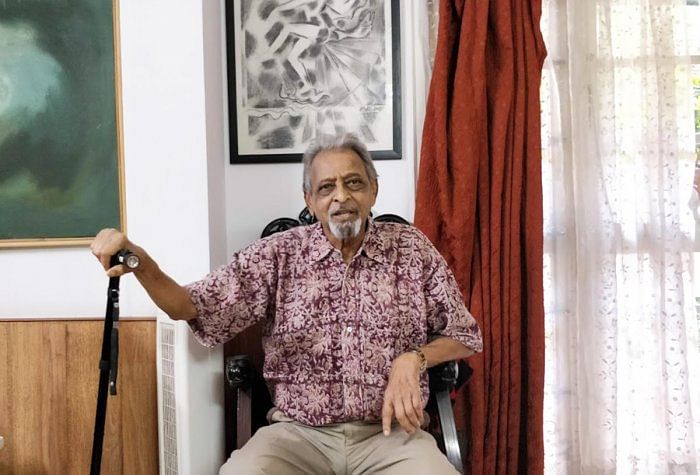He equipped himself by foraying into several fields such as Archaeology, Architecture, study of inscriptions, Art History, History of Religions and an extraordinary sensitive readings of literature. He was also a fine translator whose translations of some Sangam poems into Kannada rank among the finest in the language. Prof Settar had the ability to reinvent himself as a scholar by taking up for devoted pursuit several different areas. He authored a four-volume history of art which won him international recognition.
He later began his intensive study of Jain religions which resulted in the two volumes - 'Inviting Death' and 'Pursuing Death'. These books presented a new model of historiography of the Jain religion. He went beyond the exegesis of Jain theological works and did an archaeological study of sites connected with the death rituals. The books also throw light on the impact of Jain religion on Karnataka.
Many of the insights found in these books returned recently in his works when he explored the relationship between Sanskrit, Prakrit, Kannada and the two main religions, namely Buddhism and Jainism. Both religions practised the policy of preaching in the language of the place and people. This eventually led to the Jaina epoch in Kannada literature, producing the canonical works of Pampa, Ranna, Ponna and Janna.
His study of the Sangam poets of Tamilagam led him to the discovers that some of them were from the Kannada Nadu of the ancient times. He was also able to argue brilliantly that some of the smaller linguistic communities living in the border areas fought a cultural battle to retain their linguistic and cultural identity against both Tamil and Kannada.
Long before interdisciplinarity became the buzz word, Prof Settar performed multidisciplinary research of the highest standards. His research flows effortlessly from Theology to Art, from linguistic analysis to temple architecture. He also broke the invisible wall between professional/ academic history and the informed common reader. His work 'Sangam Tamilagam Mattu Kannada Nadu-Nudi' went into several editions with reprints virtually becoming best sellers. His Prakrit Jagadwalaya was sold out in less than a week. The two reasons for this phenomenon are prose and his ability to engage with the central aspects of ‘Kannadaness’ and Kannada traditions. Every work by him has pushed the boundaries of the imagined Kannada community.
As (playwright) H S Shivaprakash painted out Prof Settar did not subscribe to an essentialist view of Kannada and Karnataka. As a historian, he believed that these were fluid and porous categories without boundaries with the result that their history is one of endless inter-textuality and constantly changing negotiations with other languages, regions and cultural worlds.
This aspect of Prof Settar’s writings has in a subtle way impacted on the major debates in Kannada society. Many discourses on Kannada are fixated on certain idealistic notions and these have at times given a chauvinistic tinge to the debates. By constantly expanding the boundaries of Kannada culture, Prof Settar’s works have set the tone for a more nuanced debate. For example, the debate on the word ‘isila’ took a new direction with his intervention. His writings have been enriched by his inwardness with the knowledge of the developments in the conceptualisation of historiography.
They have brought historical scholarship in Kannada far away from the imperialist and nationalist frameworks. He has also in his unique urbane dialogic style taken up several contentious issues.
His study of the architects, artisans and the sculptors from the Buddhist period onwards has helped in reconstructing the cultural/ artistic greatness of some of the sub-altern classes in Indian history.
As I heard the news of Prof Settar’s passing away, memories of seeing him in my student days came back to me. A suave, very handsome, impeccably and stylishly dressed Prof Settar was the most attractive individual on the campus. For us, he had the aura of literally being brought back from the Dharwad railway station by the vice-chancellor to continue teaching at the university. A witty conversationist, a charming reciter of anecdotes and ‘the last gentleman’, Prof Settar was a guru and friend to hundreds of writers, like me.
(The writer is director, Manasa Centre for Cultural Studies, Shivamogga. He is a literary and cultural critic)
